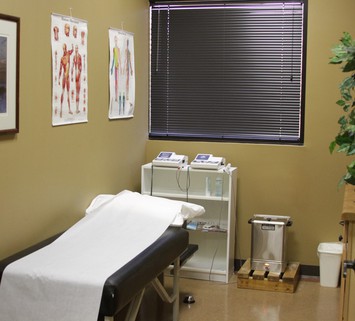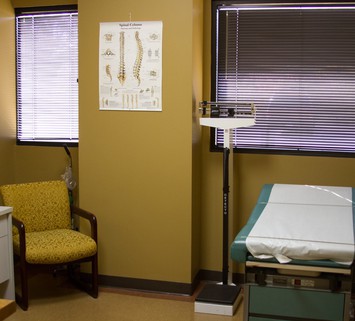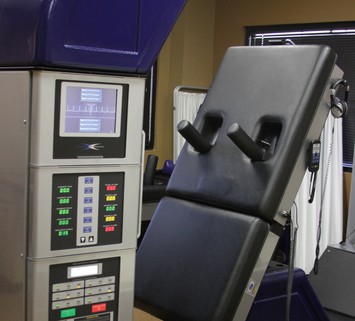The prospect of getting any kind of surgery can be daunting, even when hearing it is “minimally invasive procedure.” Spine surgery, specifically, can cause patients serious trepidation. The good news is, minimally invasive spinal surgery can effectively address your back pain without the complications of traditional open spine surgery. Here, we will discuss the different elements of this type of procedure and answer your questions about the recovery time for minimally invasive spine surgery.
What is Minimally Invasive Spine Surgery?
In the case of spinal surgery, the term “minimally invasive back surgery” means that your neurosurgeon or orthopedic surgeon is able to perform a procedure without using a large incision to access the surgical area, and the muscles and soft tissues in your back can remain uncut.
Unlike minimally invasive surgery, open spine surgery requires the surgeon to make a large incision in the back and to attach and reattach muscle that impedes access to the surgical site. This is considered major surgery and can produce a much longer and more painful recovery process than a minimally invasive approach that utilizes smaller incisions, fiber-optic imaging, and small specialized tools.
Benefits of a Minimally Invasive Approach
The benefits of minimally invasive back surgery are numerous. Hospital stays are usually much shorter; in fact, most patients can be back at home the same day as their operation. Additionally, this approach offers a shorter recovery time and less postoperative pain than its more invasive counterpart. Finally, the use of small incisions can substantially reduce the risk of scarring, thereby contributing to a patients overall satisfaction with their spine surgery experience.
Types of Minimally Invasive Operations
The most commonly seen types of minimally invasive spine surgery are as follows:
Microdiscectomy
This surgery is used to address back pain caused by pinched nerves in the spinal column. When spinal nerves are put under pressure, it can cause consistent and radiating pain to the extremities. During this procedure, a small portion of bone is removed from above the nerve root; this relieves pressure on the nerve, effectively eliminating pain.
Laminectomy
Like the procedure discussed above, a laminectomy is also used to address pain caused by undue pressure on the nerves of the spine and involves the removal of a bone fragment. However, this procedure is most commonly used when spinal compression is caused by spinal stenosis, which is defined as a narrowing of the spinal canal.
Lumbar Fusion
Spinal fusion, normally taking place in the lumbar spine, is a procedure in which two vertebrae are fused together permanently. This procedure can increase stability, correct deformities, and reduce pain for patients dealing with conditions like:
- Spinal Stenosis
- Scoliosis
- DDD (Degenerative Disc Disease)
- Spondylolisthesis
Who is a Good Candidate for Minimally Invasive Spine Surgery?
It is important to keep in mind that your surgeon will ultimately know and recommend what kind of procedure will best treat your specific condition. However, generally speaking, patients suffering from spinal nerve compression, a herniated disc, instability of the spine, or a spinal deformity may be good candidates for minimally invasive spinal surgery.
How Painful is Minimally Invasive Spine Surgery?
The amount of pain a person will experience after surgery will vary greatly from patient to patient. That being said, one of the main benefits of minimally invasive spine surgery is that postoperative pain is greatly reduced. Patients will often be sent home with some type of pain medication post-surgery, including instructions on how to use them appropriately. However, the pain should be manageable with rest, icing to reduce swelling (as instructed), and over-the-counter medications.
What is the Success Rate of Minimally Invasive Spine Surgery?
On average, the success rate for minimally invasive spine surgery is over 90%. While this is slightly lower than the average success rate of open spinal surgery (95%), many will agree that, when combined with all of its benefits, the minimally invasive approach is the highly preferable option.
How Long Does it Take to Recover From Minimally Invasive Spine Surgery?
The recovery time for minimally invasive spine surgery varies from patient to patient and depends on multiple factors, such as the patient’s overall health, what surgery was performed, and how well the patient followed instructions for preparation and recovery; however, the average recovery time is roughly six weeks.
Physical Therapy
As with any surgical procedure, physical therapy will be a big part of your recovery from spinal surgery. Physical therapy will begin in the hospital very soon after surgery and continue after you return home. As you work through the postoperative regimen developed by your physical therapist, you will regain strength and regain mobility until you return to or surpass your pre surgery level of health and wellness.
Wound Care
While recuperating at home, it is imperative that you take proper care of any incisions from your surgery. Nothing can delay healing or worsen postoperative pain like an infection. Make sure to keep your incision clean and follow the home care instructions given to you by your surgeon. If you notice any signs of infection, such as swelling, redness, fever, or abnormal or excessive drainage, contact your doctor immediately.
Rest
Giving your body time to heal after surgery is important. For that reason, in the time after your operation make sure to give your body as much rest as possible. Healing takes energy! So, make sure you’re giving your body the rest it needs to do its job.
Getting Treated For Back Pain
If you are dealing with consistent back pain and would like to seek out treatment, search for a trusted spinal neurosurgeon or spine clinic that can properly assess your condition. Working with a board-certified physician that you trust can help ensure that the entire spine surgery process goes as smoothly as possible for everyone involved.
To find out if you’re a candidate for a minimally invasive procedure, schedule an appointment at Texas Spine Center today.



